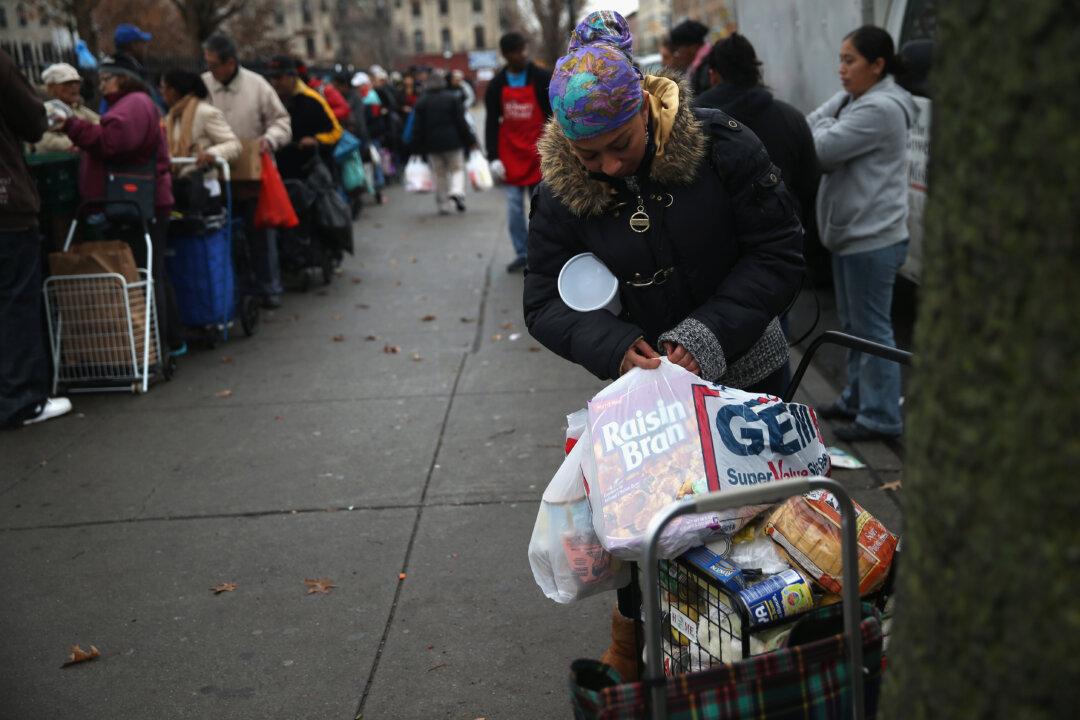Americans in 32 states are expected to see their benefits under the SNAP food assistance program shrink by $95 per month, starting in March, as the federal government ends the temporary emergency allotments introduced in the wake of the COVID-19 pandemic.
The Supplemental Nutrition Assistance Program (SNAP) is a federal program that offers low-income people assistance to buy food. In March 2020, Congress passed a law allowing the U.S. Department of Agriculture’s (USDA) Food and Nutrition Service (FNS) to provide emergency allotments to households receiving SNAP benefits to help Americans get through financial hardships brought about by the pandemic.





